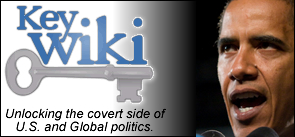Trapper’s Quote of the Week
By: Trapper Pettit This week, Katie Couric stated that the MAGA base is driven by...
Read MoreBy: Trapper Pettit This week, Katie Couric stated that the MAGA base is driven by...
Read MoreBy: Cassandra McBride | Ammo.com According to recent surveys, 81% of gun owners and 57% of non-gun...
Read MoreBy: Trapper Pettit I’ve concluded that sometimes you can fix stupid, but that one thing is...
Read MoreBy: Trapper Pettit I’ve noticed one thing about good politicians: when they tell you a blatant...
Read MoreBy: Cliff Kincaid There is a “humanitarian catastrophe” in Gaza is the scream heard around the...
Read MoreBy: Cliff Kincaid When Washington, D.C., Cardinal Wilton Gregory criticized Joe Biden on Easter...
Read MoreBy: Cliff Kincaid It was an act of war. I have posted my new report on the Baltimore bridge...
Read MoreBy: Trapper Pettit It’s only possible to know what you know if you take the time to question...
Read MoreBy: Cliff Kincaid After an attack like we saw in Baltimore, which we have to assume to be...
Read MoreBy: Trapper Pettit General Michael Flynn, former head of the Defense Intelligence Agency (DIA) at...
Read Moreby TMH | Mar 22, 2024 | Authors, Denise Simon, Illegal Immigration, News, Politics | 0 |
By: Denise Simon | Founders Code A few months ago, this website published an article describing...
Read MoreBy: Denise Simon | Founders Code We often wonder why Germany is so feeble with policy when it...
Read More

My beloved husband,
GARRY HAMILTON,
passed away
on September 24th, 2022.
I will love you always.

